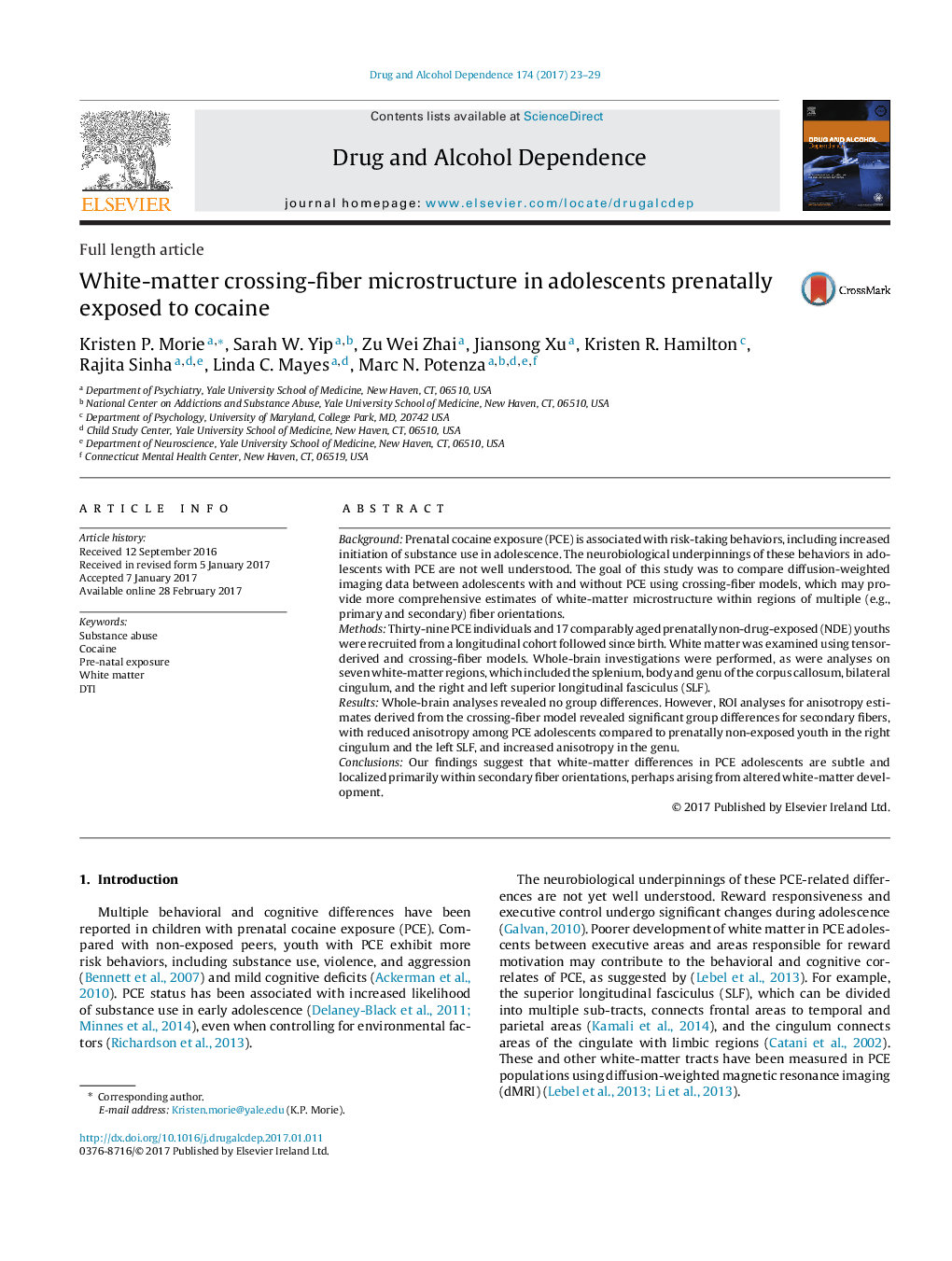| Article ID | Journal | Published Year | Pages | File Type |
|---|---|---|---|---|
| 5120120 | Drug and Alcohol Dependence | 2017 | 7 Pages |
â¢We examined white matter in adolescents with prenatal cocaine exposure (PCE) and controls (NCE).â¢Seven regions of interest were examined.â¢A crossing fiber model was used.â¢Group differences were present in secondary fibers in the SLF, genu and cingulum.â¢Alterations in white matter in PCE adolescents are subtle and may reflect altered development.
BackgroundPrenatal cocaine exposure (PCE) is associated with risk-taking behaviors, including increased initiation of substance use in adolescence. The neurobiological underpinnings of these behaviors in adolescents with PCE are not well understood. The goal of this study was to compare diffusion-weighted imaging data between adolescents with and without PCE using crossing-fiber models, which may provide more comprehensive estimates of white-matter microstructure within regions of multiple (e.g., primary and secondary) fiber orientations.MethodsThirty-nine PCE individuals and 17 comparably aged prenatally non-drug-exposed (NDE) youths were recruited from a longitudinal cohort followed since birth. White matter was examined using tensor-derived and crossing-fiber models. Whole-brain investigations were performed, as were analyses on seven white-matter regions, which included the splenium, body and genu of the corpus callosum, bilateral cingulum, and the right and left superior longitudinal fasciculus (SLF).ResultsWhole-brain analyses revealed no group differences. However, ROI analyses for anisotropy estimates derived from the crossing-fiber model revealed significant group differences for secondary fibers, with reduced anisotropy among PCE adolescents compared to prenatally non-exposed youth in the right cingulum and the left SLF, and increased anisotropy in the genu.ConclusionsOur findings suggest that white-matter differences in PCE adolescents are subtle and localized primarily within secondary fiber orientations, perhaps arising from altered white-matter development.
